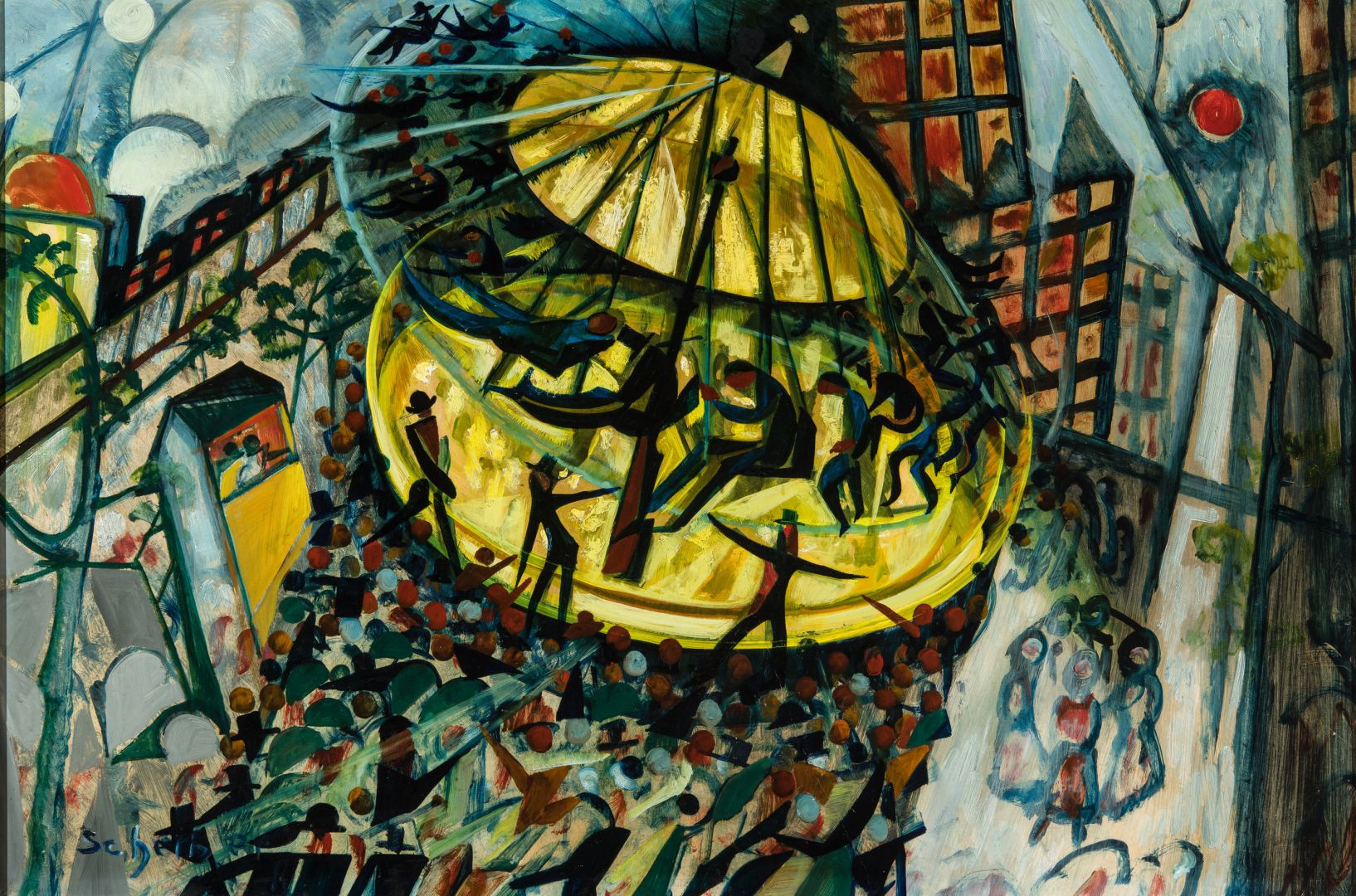Corridor III - 3. view
Funfair
SCHEIBER Hugó
Budapest, 1873 – Budapest, 1950
Funfair, ca. 1932
As a young man, Hugó Scheiber worked as an assistant to his sign-painter father among the stalls and circus tents of the Prater funfair in Vienna. He was both attracted to and repulsed by the world of grease-painted clowns, daring trapeze artists and provocative female riders.
In this painting, the illuminated carousel rotates in the centre of a funfair set up in Budapest’s City Park, with a horde of faceless people thronging about like ants, patiently waiting to have a go. Inspired by Italian Futurism, Scheiber shows the crowd surrounding the merry-go-round from a bird’s-eye perspective, and from above the people seem all the more insignificant and mortal. The wheel keeps on spinning, and everyone will eventually take their turn. The distant lights of the city and the outlines of tall buildings can be made out against the blue of the twilit sky. The Italian Futurists regarded Scheiber as one of their own, and at their national exhibition in Rome in 1933, their leader, Filippo Tommaso Marinetti, asked for two rooms to be set aside for Scheiber to present his works in a one-man show.
